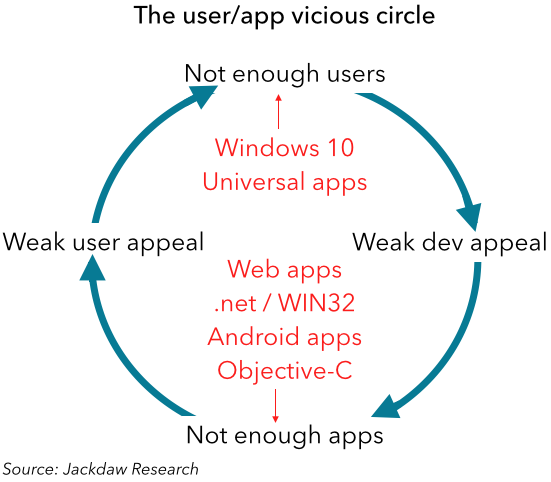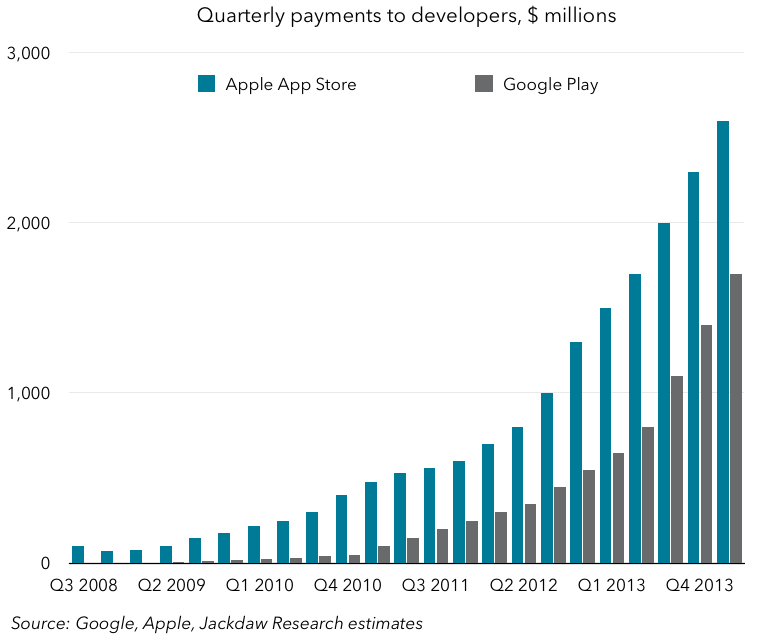Yesterday was a busy day, as these keynote days always are – several hours of waiting around with very little to do, followed by several hours of frenetic activity both during and immediately after the keynote, as I prepare a quick comment for reporters, talk to some reporters, and do quick write-ups for clients. I feel like my head is still spinning, and although I have a variety of things I want to write about, I don’t feel quite ready to do a deep dive on any of them yet. As such, I’m going to do something a bit different – post several short thoughts here, some of which I may expand on with proper blog posts later, and some of which we may talk about on the Beyond Devices Podcast later this week (we’ll be recording Wednesday and the podcast will hopefully go up Thursday).
Music majors on what I said it should
Apple Music majors in part on what I said it should in this piece I wrote back in April – that is, it differentiates partly on the basis that it gives you a single home for your existing collection of music and the new stuff you access through the service, with the ability to easily add new material to your library. I also said in that piece that I thought Apple Music might be most relevant to older folks with more money than free time, and that still feels right.
Beats 1 is a weird hybrid
Beats 1 is a funny mix – neither algorithmic curation nor human, personalized curation, but generic human curation, just like traditional radio. To my mind, Beats 1 is the strangest part of the Music launch – the piece that feels like it doesn’t belong, and perhaps was Apple’s desperate attempt to provide a headline feature to set Apple Music apart from other subscription music services. In my mind, it wasn’t needed – as I said above, I think Apple Music already differentiates itself in the most important way. Then, behind Beats 1 is now hiding a series of more customizable radio stations, which used to be known as iTunes Radio. Lumping all this together as radio also feels like it might be confusing, but at least iTunes Radio is being infused with some Beats smarts, which should make it better. I also wonder if Beats 1 is a concession to trying to appeal to the younger crowd, despite the older appeal I think most of Apple Music will have.
Connect feels more significant
On the other hand, Connect feels more interesting, and more unique. Whereas Spotify (and to a lesser extent Deezer, Rdio etc) has always seemed the target (victim?) of Apple Music, Connect feels like it’s going after SoundCloud and YouTube, where many undiscovered artists make their start. The problem today is that once an artist breaks through they tend to withdraw from these platforms and become increasingly distant from fans. Some artists (Taylor Swift seems a great example) maintain a direct connection with fans through social media, but for many others there’s this disconnect. I feel like Connect could be the first platform that gives artists a home that will work whether they’re undiscovered in their bedroom or coming off a platinum record. Connect also feels like a big tool for appealing to younger users.
The Music launch should have been its own event
Music was the “one more thing” at the end of the keynote, but it really didn’t fit there – in days past, this launch would have had its own event (likely in the fall, Apple’s traditional time for such events), but instead it was squeezed in here. This was a mistake – it didn’t do the service justice, and the Music segment felt rushed and cluttered, but still left all of us somewhat unsure about exactly how it works. It really should have been its own event, separate from WWDC (which is, after all, a developer conference, and there’s no developer angle to Apple Music – yet).
Developer events are getting cluttered
This brings up a broader point – each of the major developer events – Microsoft’s Build, Google’s I/O, and Apple’s WWDC – feels increasingly cluttered. As the aspirations and reach of these companies grows, a single annual two-hour keynote is becoming an increasingly poor way to communicate all that needs to be communicated. Microsoft does two keynotes, which is one way to deal with the problem (Google has done this in the past). But it just highlights the degree to which this two month period in the late spring is becoming a huge pile-up of news, that doesn’t really serve anyone well. All three companies should be thinking about spreading this stuff out more.
The Apple TV news merits its own event too
Speaking of all this, where in the world would Apple have fit the three major pieces of Apple TV news at this year’s WWDC? With a keynote that already felt light on detail and rushed, how could it ever have hoped to also announce new Apple TV hardware, and Apple TV SDK, and the Apple TV service? Thankfully, we didn’t have to find out, and that will likely all be announced together at a later date. I just hope it won’t all be crammed into September’s iPhone event. Perhaps the iPad event in October?
Native apps on Watch are the biggest developer news
Although iOS and OS X are the two big focus areas for WWDC each year, to my mind the most significant news by far was watchOS 2, and especially the ability for developers to create native apps and tap into the hardware and software features of the Watch directly. I’ve always felt that third party apps will be a huge part of the mainstreaming of the Apple Watch (just as they were for the iPhone and iPad before it), but the early model of companion apps and WatchKit just wasn’t going to cut it. I see a huge swathe of much more compelling Watch apps later this year when watchOS 2 becomes available, and I think we’ll see a huge growth and broadening of the appeal of the Watch as a result.
Google and Apple did stability releases while Microsoft goes big
There was some interesting timing this year at the developer events – Apple did its big overhaul of iOS in 2013 and OS X in 2014, while Google also did its major overhaul of Android in 2014. This year, both these companies focused on stability releases with relatively incremental improvements and lots of polish. By contrast, Microsoft is releasing its biggest Windows upgrade in years, across all device categories. I haven’t yet thought through all the implications of that (beyond mere intellectual curiosity), but it’s interesting to ponder.
Siri advancements reinforce Apple’s privacy stance
The Siri announcements were a wonderful validation of the piece I published last week on Apple and privacy. In that piece, I wrote that nothing in Apple’s privacy stance should prevent it from being able to do clever and useful things in iOS and beyond to better serve users with machine learning, and its WWDC announcements reinforced that. Enhancements in Siri and Spotlight are the best examples, but the natural language processing improvements in multiple individual apps are part of this broader picture too.
Apple is retaking control of content
Apple has been big in content for twelve years, since the launch of the iTunes Store in 2013, and continuing with major launches like TV shows and movies in iTunes, iBooks, Newsstand, and so on. However, for the last several years Apple has seemed adrift in content, a victim rather than a driver of trends, and has seen its content revenues stagnate and fall even as third party apps explode (along with the associated revenue stream for Apple). This year, Apple finally seems to be retaking control of control, with the News app, Apple Music, and presumably the Apple TV service later this year. Apple finally seems to be embracing subscriptions in music and video, and recognizing that some of its other content platforms (notably Newsstand) aren’t working and rethinking them. News puts it uniquely in control of a certain form of content, while Music also gives it some unique ownership of artist-created and DJ-created content, which is a fascinating shift.


